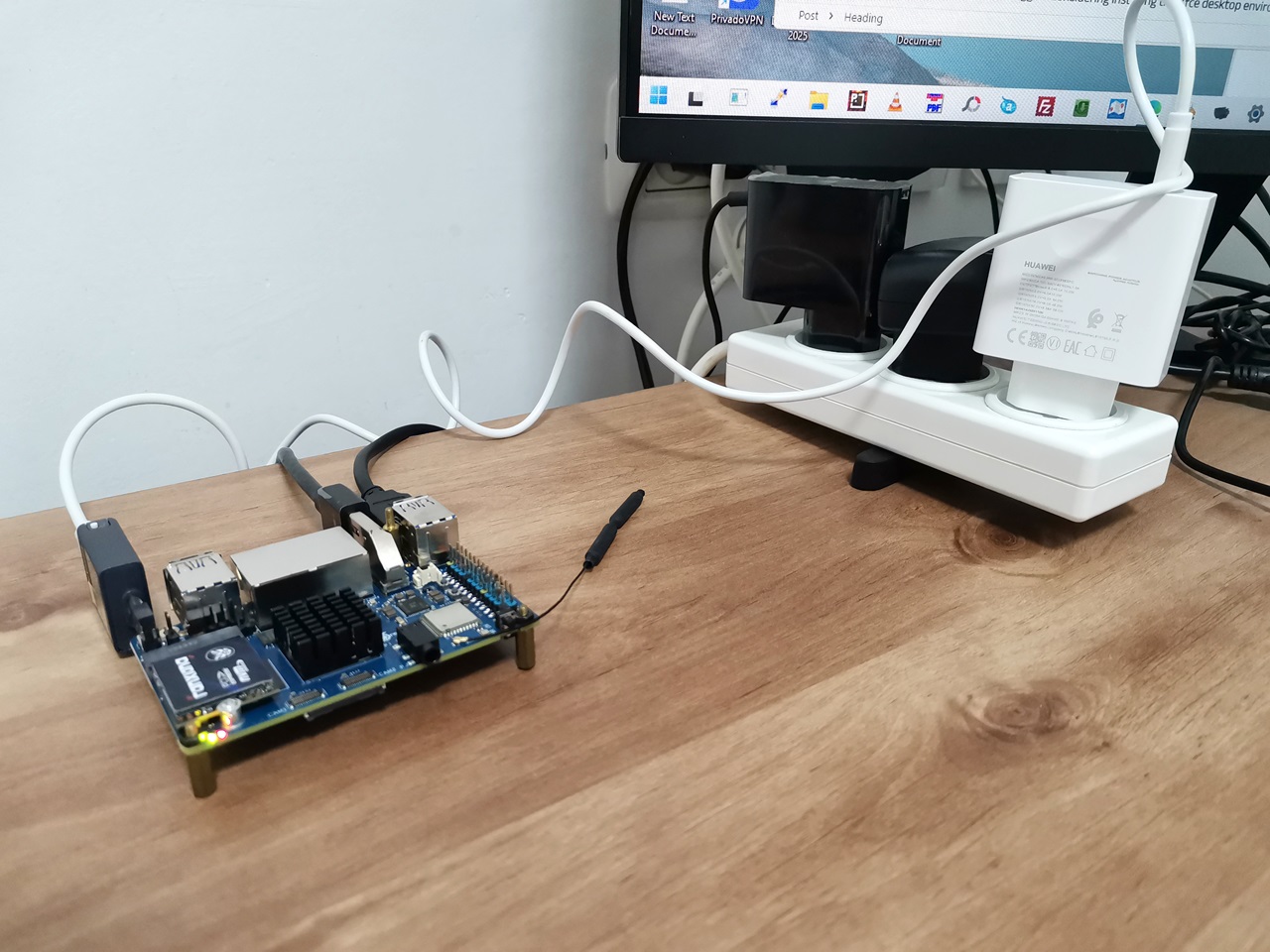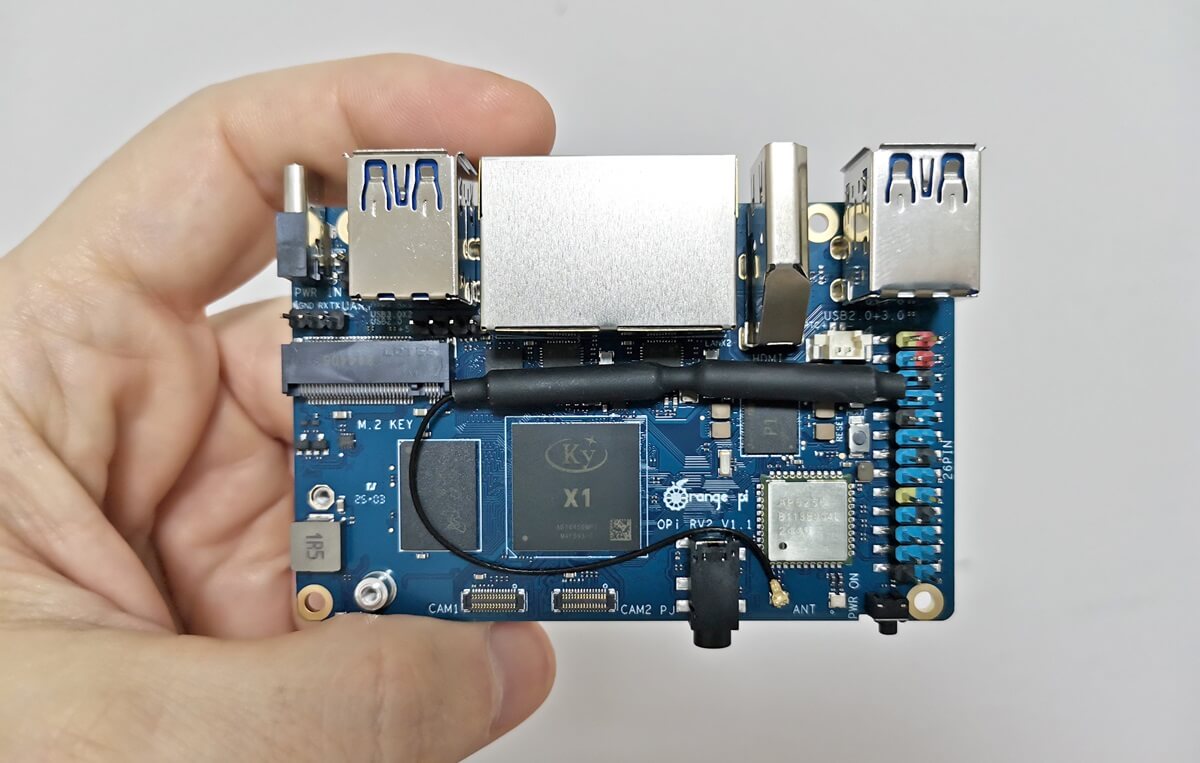Software Support
At present, Orange Pi only provides Ubuntu Noble images, which come in both desktop and server editions built on Kernel V6.6.63. Regarding OpenWrt support, the Orange Pi team has disclosed that it is still in the development phase, with a release expected soon.
System resources
The RV2 is available in multiple RAM configurations, ranging from 1GB to 8GB, each reflecting different pricing tiers based on user requirements. In this review, we tested the 8GB edition priced at $50.
As illustrated in the screenshot below, the system utilized only 979 MB out of a total of 7.65 GB, which equates to approximately 12.8% of the total available RAM during a clean, fresh installation without any additional services running in the background.
Runing htop monitoring tool (Screenshot)

Power Usage and Temperature Monitoring
Our tests indicate that, at an ambient room temperature of 24°C, the main chip reaches approximately 55°C and higher without using a heat sink. In contrast, our infrared meter recorded temperatures around 45-48°C. Therefore, if you require a compatible heatsink, you will need to purchase it separately. A heatsink measuring 20mm x 20mm (L x W) should be more than sufficient.
root@orangepirv2:~# sensors
cluster0_thermal-virtual-0
Adapter: Virtual device
temp1: +56.0°C
cluster1_thermal-virtual-0
Adapter: Virtual device
temp1: +56.0°CEvaluating the chip temperature with an infrared thermometer




But wait, isn’t the temperature too high?
The temperatures reached excessive levels, particularly for a board not enclosed in a case. Consequently, we decided to replace the original Orange Pi power adapter with a Huawei PD power adapter. This change effectively lowered the temperature to 46°C which is more reasonable.
What are the actual power requirements for the RV2 board?
The product information page on the Orange Pi website indicates that this board requires a power supply of 5V – 5A. In reality, though, a power delivery (PD) power supply of just 0.5-1A is typically adequate. If you experience any problems, it’s advisable to upgrade to a 2A or 3A power supply to enhance performance, while maintaining decent temperatures.



So, do you still need to use a heatsink?
The answer is a decisive yes. The temperatures of the RV2 often exceed 50°C. By integrating a heatsink with active cooling, we can significantly improve the cooling efficiency of the hardware.




